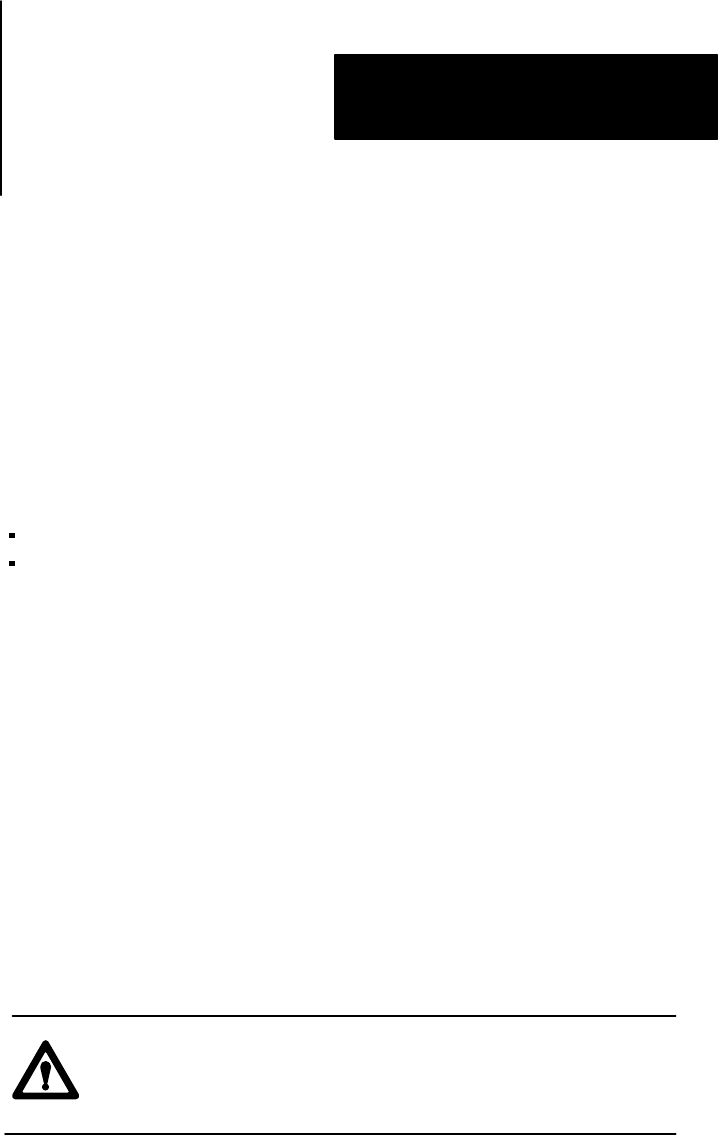User Manual Owner's manual
Table Of Contents
- 1772-6.5.8, Mini-PLC-2/02, -2/16, -2/17 Processor, User Manual
- Important User Information
- Summary of Changes
- Table of Contents
- 1 - Using This Manual
- 2 - Fundamentals of a Programmable Controller
- 3 - Hardware Features
- 4 - Installing Your Programmable Controller
- 5 - Starting Your Processor
- 6 - Maintaining and Troubleshooting Your Processor
- 7 - Memory Organization
- 8 - Scan Theory
- 9 - Relay-Like Instructions
- 10 - Program Control Instructions
- 11 - Timers and Counters
- 12 - Data Manipulation and Compare Instructions
- 13 - Three-Digit Math Instructions
- 14 - EAF Math Instructions
- 15 - EAF Log, Trig, and FIFO Instructions
- 16 - EAF Process Control Instructions
- 17 - Jump Instructions and Subroutines
- 18 - Block Transfer
- 19 - Data Transfer Instructions
- 20 - Bit Shift Registers
- 21 - Sequencers
- 22 - Selectable Timer Interrupts
- 23 - Report Generation
- 24 - Program Editing
- 25 - Programming Techniques
- 26 - Program Troubleshooting
- A - Specifications
- B - Processor Comparison Chart
- C - Number Systems
- D - Glossary
- E - Quick Reference
- Index
- Back Cover

Chapter
6
6-1
Maintaining and Troubleshooting
Your Processor
This chapter describes techniques of maintaining and troubleshooting your
processor. When you have finished, you should be:
aware of items requiring maintenance
able to troubleshoot your processor.
The processor is designed to minimize the need for maintenance and
troubleshooting procedures. Troubleshooting does not usually require
special test equipment or programming techniques. Instead, status and
diagnostic indicators on the processor help isolate the source of a fault.
The processor is an electrical system comprised of printed circuit boards
that are vulnerable to dirt and dust. We make every effort to limit
processor exposure to dust, dirt, and soot.
You should periodically inspect terminal-strip connections, plugs, sockets,
and connections for tightness. Loose connections may result in permanent
damage to the components.
ATTENTION: Remove system power before inspecting
connections in the system. Otherwise, you could damage
equipment and injure personnel.
Troubleshooting
Use a systematic approach when troubleshooting the processor to resolve a
malfunction. Some problems could result in extended periods of down
time if they were solved on an interim basis.
Generally, the problem sources can be grouped into three areas: hardware,
processor, and programming.
Chapter Objectives
General
Preventive Maintenance










